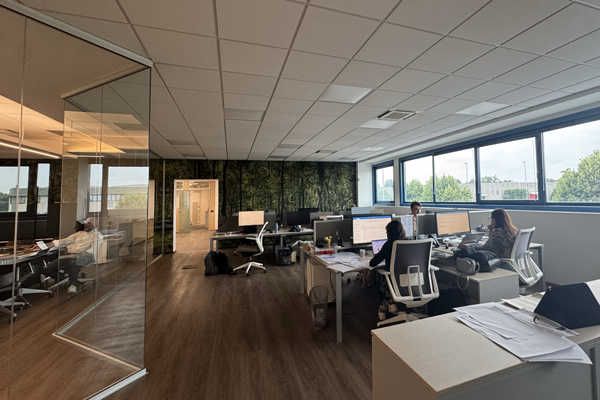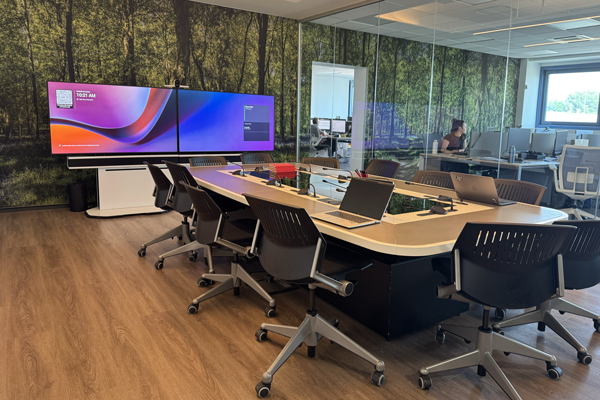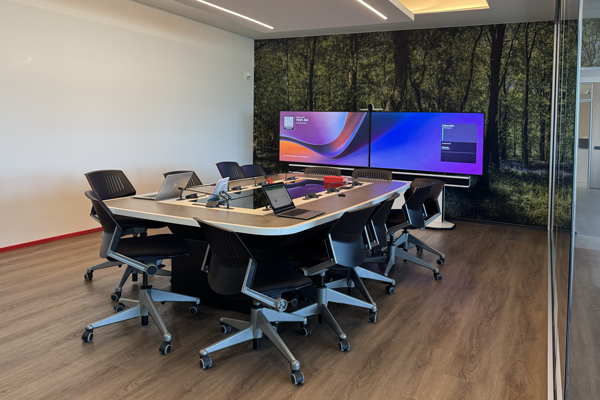-

 Technology and Design: Finding the Perfect BalanceInterviews with Leading Italian System Integrators by Chiara Benedettini and Pietro Conte
Technology and Design: Finding the Perfect BalanceInterviews with Leading Italian System Integrators by Chiara Benedettini and Pietro Conte
The Value of Integration in Corporate Projects
Silvio D'Angelantonio
Essedi

“Essedi was founded in 1993. The original idea was to bring multimedia systems into schools. Shortly thereafter I joined the company, and we began shifting our focus toward the corporate world, concentrating on videoconferencing — at the time a high-end technology used only by a few multinationals. That intuition rewarded us. We grew, and in 2021 an investment fund came in with a plan for generational change.
Our strength is covering the entire cycle internally: from sales and design to logistics, from installation to after-sales support. In a fragmented market like ours, this operational completeness makes a difference — especially when dealing with complex or integrated projects involving furnishings and interior design.”
In the world of integrated design, where spaces, furnishings, and technologies must converse harmoniously, the role of the system integrator has become increasingly central. We spoke with Silvio D’Angelantonio, co-founder of Essedi and Sales Manager, a system integrator experienced in the corporate sector.
Chiara Benedettini - In integrated projects, the relationship between technology and design becomes crucial. How do you approach this challenge?
SDA – Today, projects no longer start from technology, but from space planning. Those who design the spaces define the context in which we must integrate our solutions. This means that dialogue with architects and furniture designers is essential — and in recent years, we’ve seen increasing openness and awareness on their part. If technology isn’t considered from the beginning, if acoustic, cabling, or spatial requirements are ignored, the result is often inefficient or invasive, bringing extra costs. That’s why we work closely with design studios, supporting them from the concept phase onward.
CB - Can you share a recent example that best represents this integrated approach?
SDA – Definitely, the Deloitte offices. We’ve worked in their locations in Milan, Rome, and Bari, and are now following projects in Cagliari and Bologna, thise spaces hosting thousands of people, where the integration between furnishings, technology, and functionality was carefully designed. We started with a joint brainstorming session with designers and architects and followed the entire process through to implementation. The collaboration with those designing the spaces was fundamental, as was the search for the most suitable technical solutions. We often work with multinational companies because they truly understand the value of consulting and long-term reliability.
CB - Videoconferencing has always been your flagship. Today, with the spread of collaboration tools, what role does it play in your portfolio?
SDA – It’s still fundamental, and it always has been. Everyone talks about collaboration today, but in the early 2000s it was almost heretical to imagine working remotely. Yet we believed in it. We invested, trained, and spread the culture around it. That vision opened the door to large corporations, which were already more advanced in their thinking on this front.




1.-4. Interior of the Essedi headquarters in Gessate (Milan), Italy.
Pietro Conte - Technology and user experience: what is the system integrator’s role?
SDA – A central one. Technology should never be an obstacle, it must be an immediate, intuitive tool. When users enter a meeting room, they should focus on the content of their meeting, not on which cable to plug in or which button to press. That’s why we design customized interfaces and create scenarios where technology interacts with automation systems, furnishings, and building infrastructure. If users perceive technology as a barrier, then the project has failed.
PC - Multifunctional spaces are increasingly in demand. How do you approach them?
SDA – Once again, the dialogue between the system integrator and the spatial designer is key. In thirty years of work, we’ve witnessed a complete transformation of the office environment — from cubicles to open spaces, and now to multifunctional layouts. Understanding the client’s daily experience is essential. We even have a division dedicated to workplace ergonomics, evaluating everything from monitor size and headset type to desk positioning and workspace booking.
CB - Which technology do you see emerging in the coming years?
SDA – Definitely LED technology, which has now reached an extraordinary level of maturity. MicroLED offers high resolution even on smaller surfaces, making it ideal for boardrooms and meeting rooms. But the real revolution lies in its architectural use — wrapping columns, creating immersive environments, and integrating with transparent or curved surfaces. Increasingly, it’s used not only to display content but as a true design element, even for creating immersive environments. It’s a technology that lends itself to aesthetics, storytelling, and spatial personalization — and this is just the beginning.
